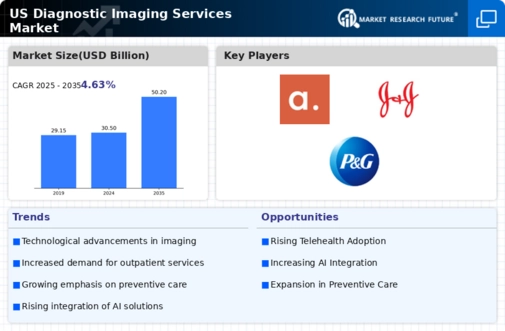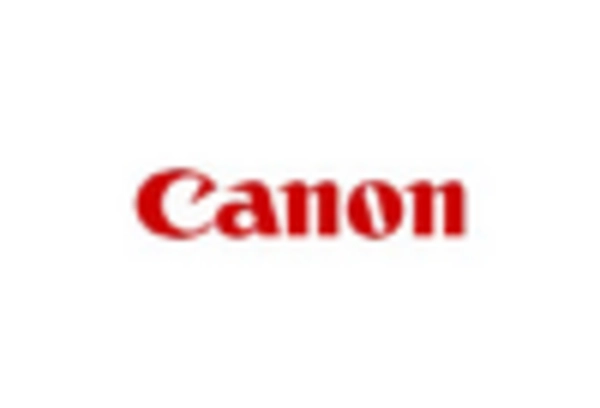Aging Population
The demographic shift towards an older population in the US is significantly influencing the diagnostic imaging-services market. As individuals age, they typically experience a higher prevalence of health issues that necessitate diagnostic imaging, such as osteoporosis, arthritis, and various cancers. The US Census Bureau projects that by 2030, all baby boomers will be over 65 years old, leading to an increased demand for healthcare services, including imaging. This demographic trend suggests that healthcare facilities will need to enhance their imaging capabilities to cater to the needs of an aging population, thereby driving growth in the diagnostic imaging-services market.
Increased Healthcare Expenditure
Rising healthcare expenditure in the US is a crucial factor propelling the diagnostic imaging-services market. With healthcare spending projected to reach approximately $6 trillion by 2027, there is a growing investment in advanced imaging technologies. This financial commitment allows for the acquisition of state-of-the-art imaging equipment, which enhances diagnostic accuracy and patient care. Furthermore, increased funding for healthcare initiatives often translates into expanded access to imaging services, particularly in underserved areas. As a result, the diagnostic imaging-services market is likely to benefit from this upward trend in healthcare spending, facilitating broader access to essential imaging services.
Rising Prevalence of Chronic Diseases
The increasing incidence of chronic diseases such as diabetes, cardiovascular disorders, and cancer is a primary driver of the diagnostic imaging-services market. As these conditions require regular monitoring and advanced imaging techniques for effective management, healthcare providers are investing in diagnostic imaging technologies. According to recent data, chronic diseases account for approximately 70% of all deaths in the US, highlighting the urgent need for effective diagnostic tools. This trend is likely to propel the demand for imaging services, as early detection through advanced imaging can significantly improve patient outcomes. Consequently, the diagnostic imaging-services market is expected to expand as healthcare systems adapt to the growing burden of chronic illnesses.
Growing Demand for Preventive Healthcare
The rising emphasis on preventive healthcare is driving the diagnostic imaging-services market as patients and providers increasingly recognize the value of early detection. Preventive measures, including routine imaging screenings, are becoming integral to healthcare strategies aimed at reducing long-term costs and improving health outcomes. The US healthcare system is witnessing a shift towards proactive care, with organizations advocating for regular imaging assessments to identify potential health issues before they escalate. This trend is likely to result in a higher volume of imaging services being utilized, thereby contributing to the expansion of the diagnostic imaging-services market.
Regulatory Support for Advanced Imaging Technologies
Regulatory bodies in the US are increasingly supporting the adoption of advanced imaging technologies, which is positively impacting the diagnostic imaging-services market. Initiatives aimed at streamlining the approval process for new imaging devices and techniques encourage innovation and the introduction of cutting-edge solutions. For instance, the FDA has implemented programs to expedite the review of imaging technologies that demonstrate significant clinical benefits. This regulatory environment fosters a landscape where healthcare providers can access the latest imaging advancements, ultimately enhancing diagnostic capabilities and patient outcomes. As a result, the diagnostic imaging-services market is poised for growth as new technologies gain traction.

















Leave a Comment